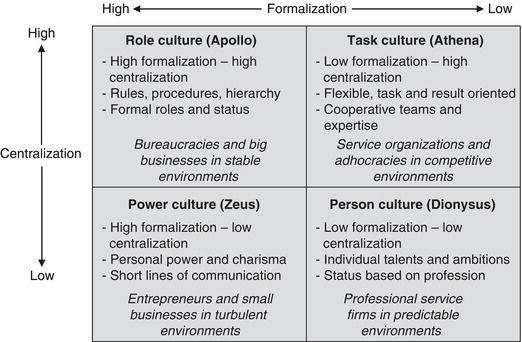A crisis is the truth of today’s fast-paced business world. Rapid organizational change, changing economic conditions, problems with personnel, unexpected technological changes, and political effects cause instability in today’s business world. This instability appears out of state control as economic disruptions that result in crisis. The process approach to crisis management builds on the concept of crisis incubation, that crises evolve within organizations, they do not simply appear, and they are not divorced from the actions of those managers who may ultimately be required to deal with the management of such events. The role of the leader, especially in crisis cannot be diminished, due to all of the responsibilities being on the shoulders of the leader and the cost of loss being too high. In a period of crisis, a leader should not only be a person who leads and inspire people but a person who can efficiently fix a Continue reading
Management Principles
Formalization – Meaning, Advantages, and Disadvantages
Formalization is the process of creating structures that govern operations within an organization. In a formalized organization, work activities are often controlled by a set of accepted rules and procedures. In addition, a formalized structure has a hierarchical and clear reporting structure that runs from bottom to top. To a large extent therefore, a formalized organization is managed through several levels of supervision. The extent of formalization, however, varies from one organization to another and is mainly determined by the size of the organization. As opposed to informational organizational structures where individuals are esteemed higher than the job positions, a formal organizational structure is made up of rules that unmistakably state how work should be done at the various levels in the hierarchy. Since rules that guide the holder of a position are static, no confusion arises when the holder of the position changes. This thus implies that the transition Continue reading
Process of Team Building
Team building attempts to improve effectiveness of the team by having team members to concentrate on: Setting goals and priorities for the team. Analyzing how team’s goals and priorities are linked to those of the organization. Analyzing how the work is performed. Analyzing how the team is working, and Analyzing the relationships among the members who are performing the job. The process of team building is a collection of steps which lead to a specific change in the approach among people, to make effective teams. Various steps of team building process are not one-shot action, rather, they are repetitive and cyclical. 1. Problem Sensing There are a number of ways in which problems of a team can be obtained. Often the team itself defines which aspects of team building it wishes to work on. This problem can better be identified in terms of what is hindering group effectiveness. At this Continue reading
4 Important Sources of Organizational Culture
An organization is a group of people who work together with coordinated efforts to achieve certain objectives or goals. Organizational goals and objectives are of various categories, and it is this variation of the goals and objectives which classify organizations into three main categories, namely profit-making, service-based, and social responsibility based organizations. Organizational culture refers to shared beliefs, values, norms, and practices which characterize an organization. Norms are informal rules which are institutionalized by organizations. The norms govern the conduct of employees and constitute what is permitted and prohibited in different organizations. One of the important aspects of organizational culture is teamwork. Organizations encourage employees to work in groups instead of working independently. Teamwork makes organizations benefit from the synergy found in groups. Working in groups gives employees an opportunity to exercise their creativity, innovativeness, skills, and talents. It also enables the group members to learn from the strengths of each Continue reading
Three Major Organizational Management Paradigms
The social understanding of organizations in the economic system has been evolving with time. Several theories have been put forward in an attempt to explain the role of organizations in society, their effect on the socio-economic and political systems as well as the relationship between society and the organizations. Models of organization theory have been elaborated with the paradigm of organizational management being developed over the years. The inclusion of technology in the management of organizations has been a key in the development of new theories and postulates on how organizations are managed and their relationship with the environment as well as society in general. Three major paradigms of perception on organizations have been elaborated below; rational, natural, and open paradigms. The rational system is the most dominant perspective embraced by most real-world managers and practitioners. The rational system is characterized by two structural features that set it apart from Continue reading
Charles Handy’s Model of Organizational Culture
Organizational culture influences the behavior of organisations but as it is intangible it is difficult to define and understand. Organisational culture introduces unspoken rituals and tacit rules and addresses the actions, values, and behaviors, which, in combination, contribute to the overall philosophy and environment of the organisation. It shapes the way in which employees behave and make decisions and is formed over time as a result of the experiences and values of the organisation and the way in which it reacts to internal and external circumstances. A key role of organizational culture is to differentiate the organisation from others and provide a sense of identity for its members. Cultures do not have to be logical or consistent, in fact they seldom are and can appear quite haphazard and chaotic to the outsider. A strong culture is one that is internally consistent, is widely shared, and makes it clear what it Continue reading


